|
Most of our students walk to school rather than ride a bus. This means that we usually have two-hour delays rather than days off when it snows, which also means some cranky students. On these days, we like to have a little more fun, and that means some experimentation.
Then we let it melt. We were pleasantly surprised by the delicate stippling since we were expecting water swirls. It turned out so interesting that we all wished that we had taken the time to use two coats of the Tiger Eye and Tahitian Blue.
So, what can you do with snow as an art medium?
2 Comments
Sometimes my students need a break from clay. All artists can become frustrated with their work or become blocked or uninspired. Researching ideas, sketching and reflecting on past work can often spark an idea and get us out of the doldrums. But sometimes we need more, like a fun distraction with alternative materials. It started with an accidental drop of a skittle into water. Almost immediately, the dye started to bleed, and within a few seconds, the experimenting began. Due to the shortened period that day, the experimentation was limited, but ideas were flying. Dipping and drawing, painting with the water, questions like, “Would the dye last on clay through a firing?” I doubt it, but I have a feeling that I will see a test tile soon. These radial designs happened by dragging the water from the skittle to the center of the plate with a popsicle stick and also swirling the water. Students were engaged, they were collaborating, and they were having fun. Research has suggested that play is an important part of human development. While this research tends to focus more on child development, studies on adolescents and adults are finding that people that tend to be more playful, are often less likely to report high levels of stress and are often more creative. These students came into my studio that day with black clouds hanging over their heads because they were trapped in school on a Friday when it was seventy degrees outside, and they left with smiles and giggles. I’m not a psychologist, but these students were definitely feeling better after a fun session of playful creativity.
Many art teachers in the High School Tab Facebook group raved about the Tantamounter activity they had done with their Art I students. This was a great "ice breaker" activity for many of them and really got their students problem-solving during the first week of school. For ceramics, this was going to be a little more involved. My students don't come to me with skills to pull this off, plus, it's ceramics, and how would I keep the objects we were going to copy safe from the clay? After some thought, I realized that my level II students did have these skills and that we could keep any non-washable objects safe in Ziploc bags. So then...What is the Tantamounter 24/7 and what did we do? In 2005, a group of artists from Vienna, Austria known as Gelitin, put on an event in New York called the Tantamounter 24/7. (Tantamount = adjective - equivalent in seriousness to; virtually the same as.) The weeklong event functioned like a human-powered copy machine. Visitors brought an item to be copied. They opened a lid on a large wooden box, placed their item inside and then closed the lid. A light bulb lit indicating the machine was working. After a bit, the light went out and the visitors received a signal that the job was complete. They then opened another door, and out came the original and a Gelitin-created “duplicate” of the item made from the art supplies they had on hand. Tantamounter 24/7 images from artnet.com While creating original art is the main objective in our ceramics studio, copying an object can greatly improve observation skills. Artists Observe is one of the artistic behaviors that create the framework for our TAB/choice ceramics studio and the Tantamounter 24/7 event provided the inspiration we needed. Level two ceramics students chose an object to copy and jumped right in. Students quickly identified the challenges of matching shapes and sizes. All were asked to reflect on the assignment and all agreed that small details really do have an impact on their work and that they did learn new skills during the process. Many students were surprised at the success they had with this project. Aeron Orsie said, “I didn’t think I was going to be able to copy it exactly but I am really excited by how well it turned out.” Based on the response from the level II students who completed the project and also the level I students that said they wanted to try it when they become level II's, we are all looking forward to trying the Tantamounter again next year.
What do you do when your school or classroom lacks technology resources? Students use their cell phones to Google ideas for their art projects. What do you do when the school decides they no longer want to allow cell phone use at the teacher’s discretion? You find someone that wants to get rid of a large screen television, connect it to your school computer and voilà, you now have a resource for creative research, and one large enough to share ideas with your entire class.
Google searches were great, but were unorganized and sometimes had items that I did not want to see in a classroom studio. While using my personal Pinterest, I thought, why not create a Pinterest account just for school? I think I’ve seen people mention this in online groups. I could sort ideas by project. Guess what? It has been a really great way for me to save ideas for my students. Anytime I see something that might interest a student, I just pin it. Because I created the account just for our studio, students can search and add pins too. They are getting more comfortable using it every day. I love watching them gather around the computer to search ideas, and then I notice all of the other students in the room looking at the screen too. I almost wish our school banned cell phones sooner. NOT. It is; however, one of the best decisions I ever made for my studio. Happy pinning! I am pretty picky about glaze organization. I want to go grab the glaze I need and continue working without loss of time or idea. I want that for my students too. I finally have a system that has really cut down on time spent finding the glazes we want on the shelves. 1. What does this color look like? Test tiles are great, but if you have been the yearbook advisor for several years, you never had time to make test tiles. Catalog pages from the glaze manufacturer are the way to go. The glazes we have in stock have a red sticker next to the name of the glaze. Amaco's photos are really accurate and my students can choose colors quickly when the samples are all in one area. 2. Where is that glaze on the shelf? The blue line of text at the top of each glaze chart shows students what type of glaze they should look for. Those letters like "LG", "F" and "CTL" get the students to the correct shelf. Our glazes are organized by type and color. Each bottle is color coded. All bottles have colored stickers on them which makes getting them back to the correct shelf after use very easy. Match the sticker color to find the shelf, match the name on the bottle to the name tag on the shelf to get it back to the correct row. And yes, this is also a special education modification. Our glaze selection is currently a bit low due to lack of funds, but this system has kept our glazes organized even when we were at full capacity.
We have very limited technology resources in our district, so when I was looking for a way to move past printing photos of student’s work and having them paste the photos in their sketchbooks, I was looking for something that students could easily access on a personal device. It needed to be free and simple. After spending a few weeks over the summer looking at several online portfolio options, I chose Seesaw. The other services I explored were great too, but Seesaw was a much simpler version of what I felt I needed for my students. Easy access on any device, a simple interface and a way for parents to connect with our studio was exactly what I was looking for.
When I chose Seesaw, I planned to have students use their own cell phone or tablet in class to photograph their work and add their artist statement or reflection. At that time, student’s personal electronic devices could be used in class at the teacher’s discretion. Guess what? Our school changed the policy to no student devices at any time except lunch. Ugh! Now what was I going to do? Fortunately, they still allowed teachers to allow students to use tablets that were school or teacher owned. I have an iPad, a laptop and a desktop computer in my classroom. So, we will forge ahead. Students will photograph their work with the iPad in class and then login to Seesaw with their QR code outside of school on their own device to complete their reflection. Homework isn’t ideal, but we are going to try it and see how it goes. Students can still access the devices I have in my classroom as well as the library if needed. This will definitely drag out the time it will take for students to complete their reflections. I was really looking forward to paperless portfolios and reflections, but we may need to step backwards here and there with paper reflections as needed. Now, back to why I really wanted to switch to digital portfolios…
At the point of writing this, we are a glaze fire away from finishing our first project. Students will photograph that project in class, they will see a demonstration on how to use Seesaw and they will be given their QR codes. I still believe, despite the change in cell-phone policy, that Seesaw is the way to go for our students. I am certainly looking forward to this new experience. Cartoon, Comic Book, Graphic Novel, Anime, Manga and Video Game Characters in High School Artmaking8/1/2016 This summer, many posts in my online PLN's discussion threads rallied behind the discouragement of cartoon characters and the like in high school artmaking. Do I think high school students can think deeper than cartoon characters? Yes, absolutely. Do I think there is anything wrong with letting them use cartoon characters in their artmaking? No. Now I admit that every time my students say, "I want to make a minion" or "I want to focus on superheroes," I do feel a tiny shudder inside, but then I remember that they are still learning and sometimes learners need to make things fun for themselves in order to push through the challenges. So, they use a cartoon character. Can they plan their project? Yes. Can they explain the why of their project? Yes. Can they still take risks, try new techniques, reflect, problem solve, identify strengths and weaknesses, persevere through challenges, assess their own work? Yes, Yes, Yes, Yes, Yes, Yes and Yes. And since this is a ceramics studio, my students are never just copying cartoon characters, the characters themselves are part of something bigger.
I must also consider student population. My students live in a small, high-poverty, inner-city community that has seen a rapid and substantial increase in drug flow and drug-related violence over the past two years. I don't have enough fingers to count the number of former students involved, shot or killed in the growing violence. One of our students took her life this year. Another student brought a gun into the building. Fortunately, security was alerted, the building went into lockdown, security emptied the building and the gun was recovered before it was too late. I have students that sleep on mattresses on the floor rather than a bed because they feel safer, lower than stray bullets entering their windows. Some of my students are foster children and some are living in shelters. For many students, the ceramics studio is a place to escape the bad around them and that means avoiding some of the deeper topics discussed in suburban art rooms. I do have students who are willing to explore deeper themes in their work, but allowing characters as part of a choice-based pedagogy does seem to help my students who struggle with their reality, and with that, I am OK. In a fully flipped classroom, video lectures are viewed by students at home before class, while in-class time is used for discussions, exercises or projects. The benefits include…
I first encountered flipping about three years ago during an online conference offered by The Art of Education. Johanna Russell, a middle school art teacher in Iowa, described how she was flipping her classroom. I realized the benefits of having more studio time with my students if I flipped. Unfortunately, many of my inner-city students do not have easy access to the Internet outside of school. That meant that I could not run a fully flipped classroom. It did not mean that I couldn’t use elements of flipping to enrich my program. I began using videos as a means to have more consistency between multiple classes. If every class saw the same video, every class received the same information. Even veteran teachers like myself have had to start a class by saying, “I forgot to mention something yesterday.” Videos added more consistency and still allowed for individual modification or remediation if necessary. Sometimes students even asked to re-watch a video. I found the use of videos to be great for absent students. I could catch them up by sitting them down at my computer to watch a video while I continued to work with other students. This was also great for all of those new students we get throughout the school year. Flipping was great for teaching the potter’s wheel. We only have one wheel, so learning is very individualized. Students were required to watch a selected video before I began working with them. This allowed me to help that student as needed with their throwing, and still help other students rather than focus all of my attention on the wheel student. Another benefit I found was in classroom management. While classroom management has always been one of my strengths, having students in seats watching a video on a screen rather than huddled around a table for a demonstration, meant less picking on each other. This was especially helpful with my special-needs students, some because of social issues and others because of mobility issues. The biggest and greatest benefit of flipping that I found was the reduction in supplies and samples needed for demonstrations. One video rather than six physical demonstrations a day saved time and especially money needed for supplies in a financially distressed, underprivileged school district. The one downside of my use of flipping was the fact that I was using videos that I did not create. I was still in front of the classroom more than I wanted due to the need to explain how the video my students just watched translated into our studio. After seeing another presentation during this summer’s online conference from The Art of Education on flipping from Nic Hahn, an elementary art teacher in Minnesota, I was re-inspired. I was going to begin creating my own videos that deliver the exact information I want my students to have. So, I spent the last week researching and purchasing equipment. The following is what I plan to use during the upcoming school year. Any digital camera with video function, camcorder, smart phone or tablet will do. I have an iPhone and an iPad. I plan to use the iPhone rather than the iPad as much as possible because my iPhone is considerably newer than my iPad, which will record a better quality video. Although, last year we used my iPad to create a stop-motion video to advertise for a glaze fundraiser, and the quality was still pretty good considering it was a very early iPad. I also prefer the immediacy of the smart phone or tablet since I can upload directly to YouTube or The Muddy Bearcat without having to upload to my computer first. All of the other equipment I purchased is compatible with either iOS or Android devices. I already own an adjustable-height tripod. I plan to use my Targus TGT-58TR that was purchased at Wal-Mart several years ago for around $18.00. Since I teach ceramics, I do not need to record from directly overhead as you might need to do with flat work, although there are tripods and tripod attachments available that will allow you to do so. There are also many DIY tutorials available as well. I purchased a MeFoto SideKick360Plus Smartphone Adapter for Tripods at the nearby Apple store for $39.95. I believe this adapter will allow for overhead video if needed, but it was purchased simply because you cannot screw a smart phone or tablet onto a tripod like you can a digital camera or camcorder. This was my most expensive purchase. I’m sure that there are cheaper adapters available, but I happened to be at the Apple store and there it was. Excited impulse buying at its finest. I want my videos to have clear voice quality and none of the echoing I’ve heard in other videos, so I decided to purchase an external microphone. I hate wires, so I purchased a Pyle Professional Lavalier Wireless Microphone System model PDWM96 found on Amazon for $13.60. Tests sound good so far. The only thing to remember with an external microphone is that you need to remove the jack during playback to allow the phone to switch from the microphone to its own speakers so you can hear the sound. This really is common sense, but I was so excited to hear the video test that I forgot to pull the jack out and thought the microphone wasn’t working. After a few minutes of testing and disappointment, my husband’s fresh eyes saw the problem. Duh, of course I can’t hear it, the phone thinks the ear buds are plugged in. Due to the type of external microphone I purchased, I needed an adapter so the jack would fit into my phone. I purchased a Monoprice 3.5mm Stereo Plug to 6.35 mm (1/4 inch) Stereo Jack Adapter found on Amazon for $2.23. The final piece I purchased, and probably my favorite, was a Gadgin AB Shutter 6 Premium Bluetooth Remote Shutter found on Amazon for $19.77. I’m lazy. I hate video editing. With a remote control I can create videos from start to finish without going back in with editing software to cut off the parts where I push the start-video button and re-push to stop the video. This small, simple remote will mean that I do not need to edit. Yay! While all of those nice fades, transitions and special effects I see in other videos are great, I do not need them nor do I have the patience to create them. No editing means that I can immediately upload the video and move on to the next thing I need to accomplish. So there it is, my list of toys for the upcoming school year. Lots of tech gadgets for under $100.00. Around $75.00 since I already own a tripod. I realized while researching and shopping, that the videos I was showing to my students really taught me about the quality and types of videos that I wanted to create for my students. All you really need is a recording device and a way to prop the device at your desired angle while recording. That could even mean leaning your device against a can of paintbrushes. You need to use what works for you. And while I realize that there will be extra work in creating these videos at the start, and yeah, maybe I don’t need the extra gadgets, I know that I have made it fun and easy enough to keep me recording and it will be well worth it in the long run, and a great benefit for my students. Happy Flipping!
Art is everywhere. While art can be loud, shocking and even awe-provoking, art is more often quiet and inconspicuous. There are no standing ovations in galleries. We don't wave foam fingers in museums. We go about our busy lives not realizing that art is with us 24 hours a day, 7 days a week, 365 days a year.
How do we choose the items we use in our daily lives? There are often many criteria. We begin with function, seeking what we need for a specific purpose. Secondly, we focus on how the item looks. The shapes, colors, textures and patterns we choose express our personalities and help us make our statement to the world. Our clothes, homes, dinnerware, handbags, man bags, shoes and even our cell phone cases are all works of art. Maybe not fine art, but art, none the less. The art of our possessions allows us to express to the world, who we are. Please, take a moment to realize that we are able to express ourselves because of the artists and designers who express themselves in the work that we gather into our lives. This site was created to showcase creativity, especially the creativity happening in my classroom. Who knows, maybe some of my awesome students will be the next great artists of their generation. |
AuthorJill M. Anders, M.Ed. Archives
February 2017
Categories |
"Art is not what you see, but what you make others see." Edgar Degas
Proudly powered by Weebly
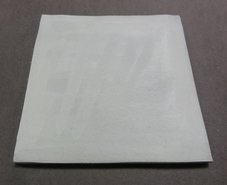
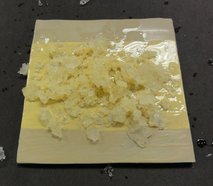

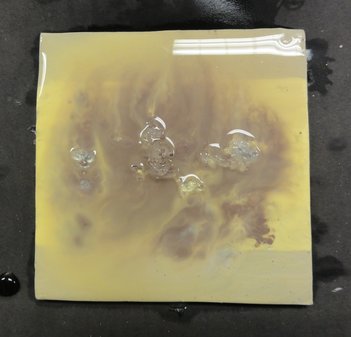
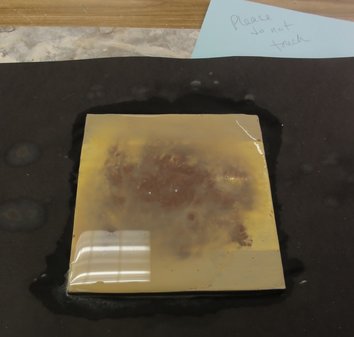
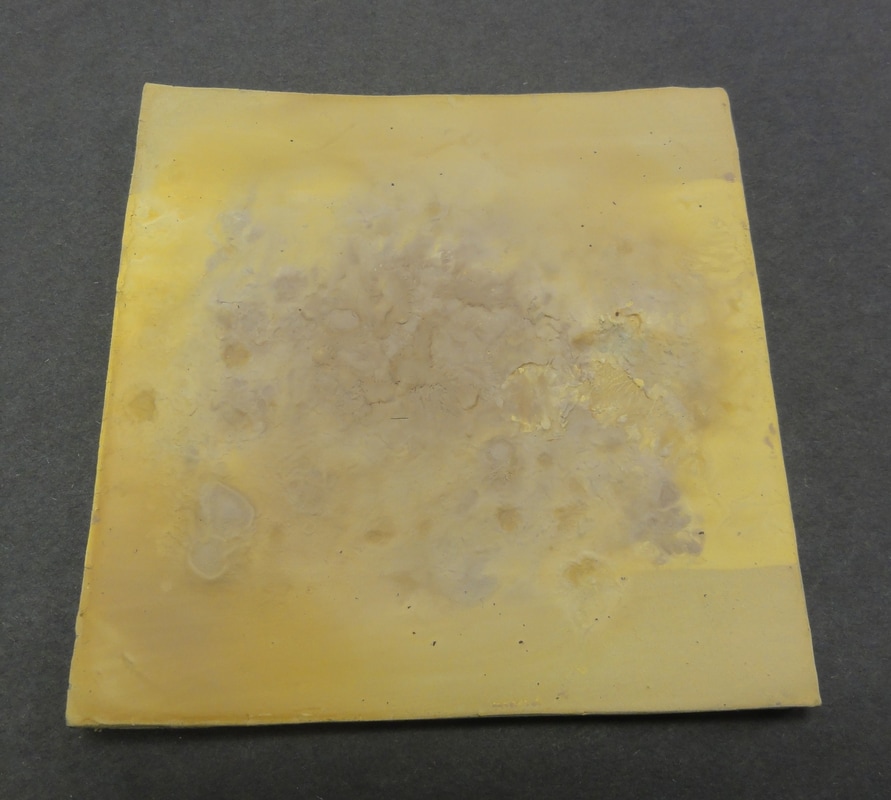




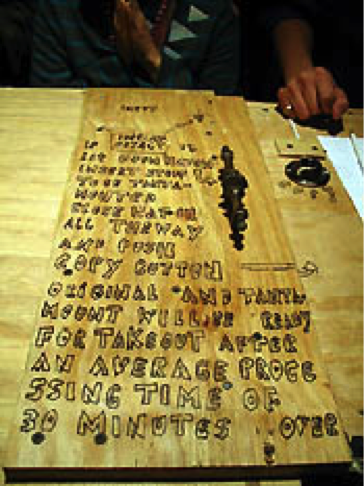

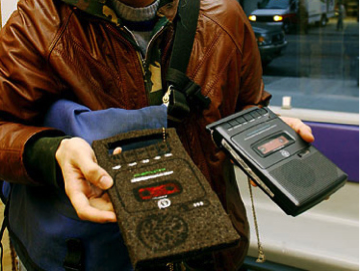




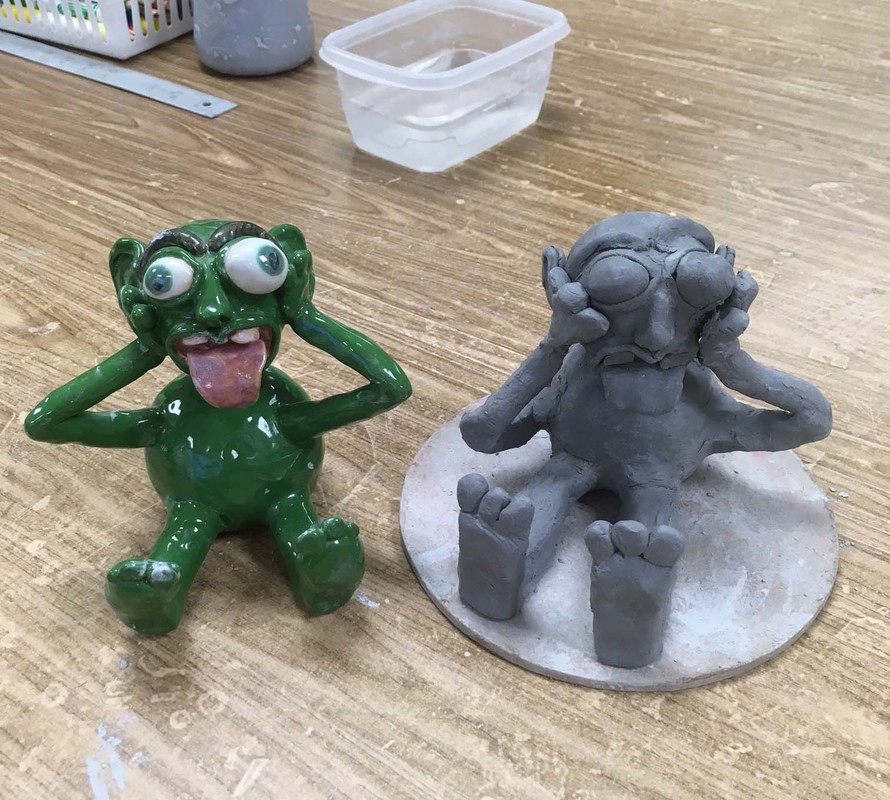
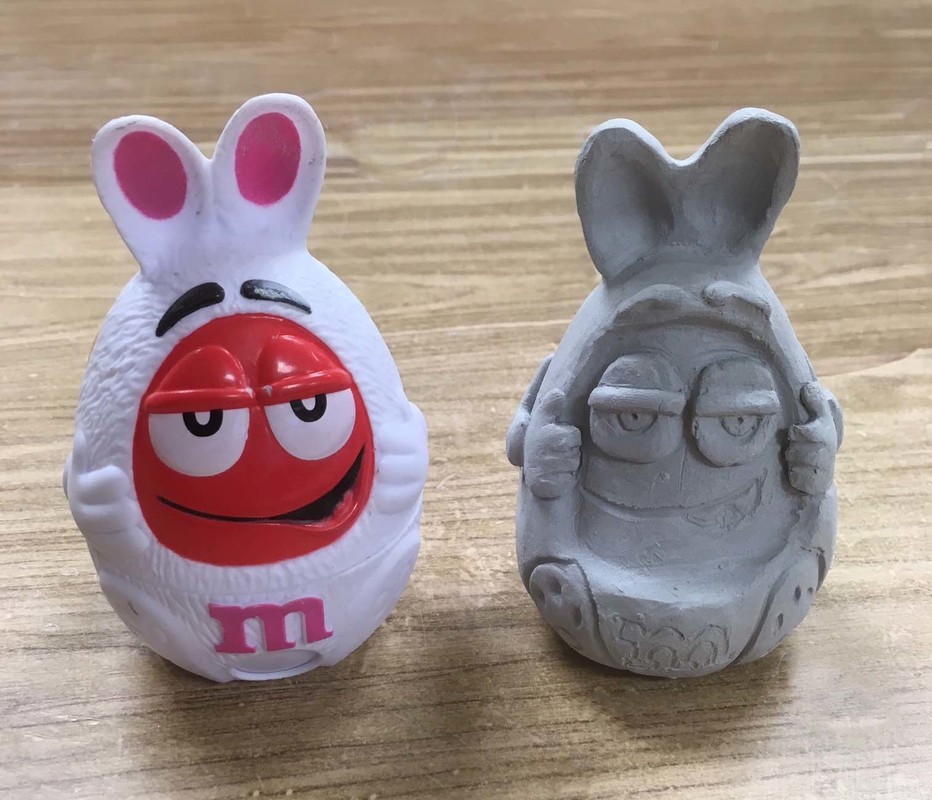


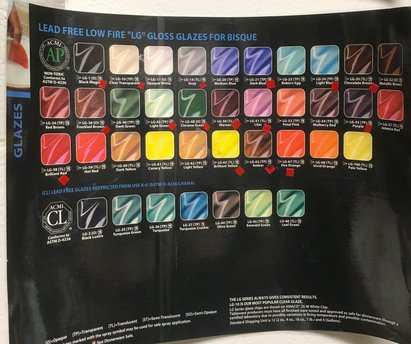
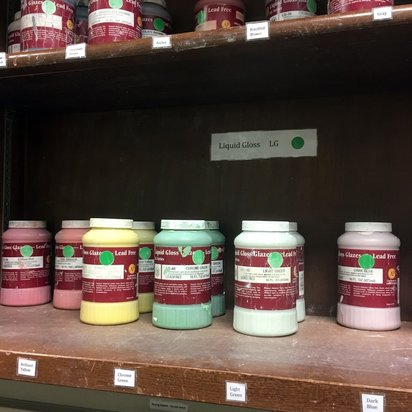

 RSS Feed
RSS Feed